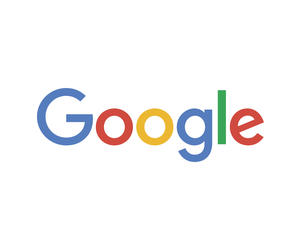The Guide Makes Chromebook Selection Simpler
Google for Education’s new guide walks district leaders and IT admins through four steps to help them choose the right Chromebook.
“We ask them what they want, how the device will be used,” says David Andrade, business development manager of Chrome services at CDW•G. “Then we walk them through the device specifications that will be needed for those use cases. We say, ‘Here’s what we recommend for the devices that meet your needs. Here’s also what’s available to purchase.’”
Administrators can find Chromebooks from Acer, ASUS, HP, Dell, Lenovo and Samsung for basic classroom use, learning anywhere or advanced use cases. Considerations frequently include price, simplicity and durability, and decision-makers often compare security, scalability, storage capacity, hardware specifications and speed as well.
Depending on the district, school and classroom, decision-makers typically factor in needs that range from content creation and web browsing to more robust uses such as videoconferencing, coding and more.
“The two things most schools look for are durability and price. They also want high performance,” Andrade notes. “The guide narrows their options. It’s a good way to give them different ideas and to help them decide what they want to accomplish.”
It’s not just the guide that’s made life easier for schools that have to buy massive fleets of Chromebooks, especially as they go one to one. Google has also launched Zero-touch enrollment, which makes it easier to deploy and manage Chromebooks at scale — even remotely.
WATCH NOW: Post-pandemic learning environments should include remote and hybrid options.
What Is Zero-Touch Enrollment?
Two years ago, students, IT staff members or teachers would have to manually program each and every Chromebook to be part of their education domain, so they could manage them through Google Admin Console to keep records, set policies and manually assign devices to students and classrooms.
If students needed assistance, they’d approach the teacher, who might approach the IT staff and so on down the line. This manual enrollment typically took more than 70 percent of the school’s time, according to an IDC white paper. In a school with a small IT team, that might hold up the teacher’s lessons indefinitely — or impede the student’s learning — until they had the bandwidth to solve the student’s onboarding problem.
With ZTE, preprovisioning partners — such as device manufacturers, distributors or resellers — can send instructions to Google to automatically enroll the school’s devices into the domain after each device is turned on and connected to the internet. There’s no need for the school to do any work.
ZTE also helps schools automatically deploy their fleet of Chromebooks from the cloud-based console and manage features such as privileged access, Chrome policies and advanced security capabilities. Removing this risk factor from the production line means Chromebooks can now go directly from production to the end user, eliminating the human intermediary. The device reaches the student’s home in its high-tech packaging, and all the student needs to do is unpack it, log in using school credentials and turn the device on, just like a personal smartphone or laptop.
For teachers, this means no programming work and more study time. For IT administrators, it’s more time to focus on other tasks. For students, it’s more time for their lessons, and for school administrators, it’s one less challenge to their busy day.
The Sustainable Advantage of Zero-Touch Enrollment
“The other day, we helped a school in the Midwest set up its remote console. The whole work took them thirty minutes,” says Aaron Hix, Chrome Commercial customer success engineer at Google. “Guess what they did with their old computers? Donated them to a school in Honduras.”
The fact that these educational devices can be rolled out faster means more children have access to Chromebooks, more children can learn and more children in the world’s most remote spots have access to technology.
“It enables children in the poorest villages, whose stories you sometimes see on Google’s education page, to make the most incredible innovations,” adds Sajed Sahni, sales engineering manager at Google. “And it enables some 300 children in the jungles of Honduras to get more educational devices faster than otherwise would have been the case.”
Chromebooks have come a long way in ten years, when Maine Township High School District first deployed its devices. Today, more than 40 million students around the world use Chromebooks, and the program has become that much easier, more effective and actionable with Google’s streamlined ZTE initiative.
Brought to you by:











